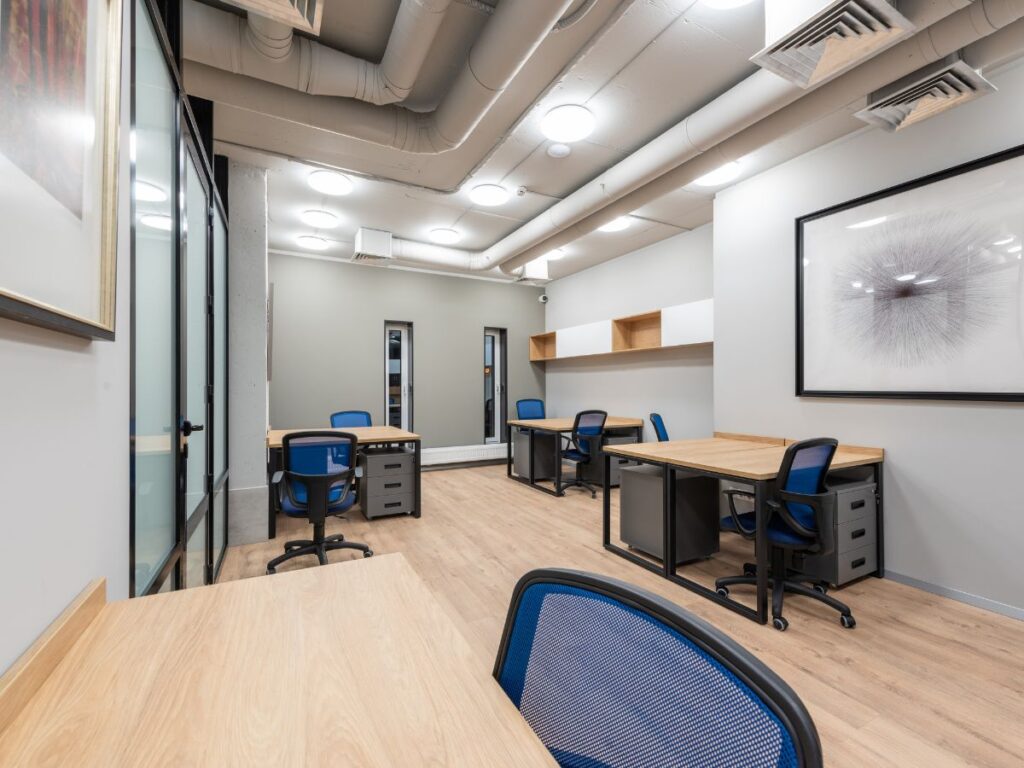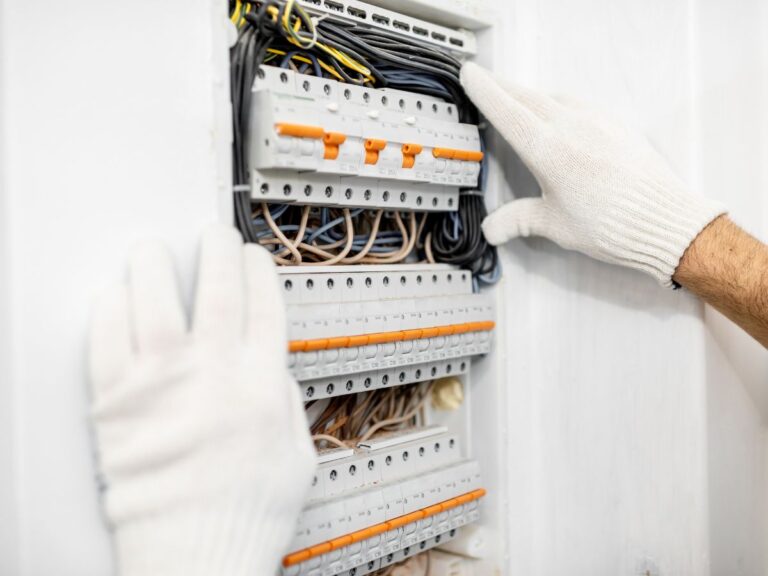Lighting is one of the most important aspects of a productive and welcoming workspace. Without proper office lighting, it can be challenging to concentrate, read or even just see what you’re doing. Office Lighting can also positively or negatively impact your staff’s mood and energy levels, so something relatively small in the scheme of your business is important to get right.
You also have a responsibility to your workers when it comes to the office lighting you provide; read more about how lighting affects the health and safety of workers from SafeWork.
Light It Up: The Top 6 Office Lighting Systems
With so many lighting options, how do you know which one to choose? We’ve compiled six of the best lighting solutions for your office or shared office space below, but nothing beats a personalised recommendation. Use a trusted local Sydney electrician to evaluate your space and needs and custom-fit the right lighting solution for you and your team.
1. Natural Lighting
Natural lighting is always an excellent option for any office space. Not only is it cost-effective, but it’s also known to positively impact productivity, mood and overall well-being. Plus, it just looks great! Sometimes the best lighting is the one we get free of charge.
If your shared office space has large windows or skylights, make the most of them by positioning desks and workstations in areas with the most natural light. If you’re worried about glare or heat, you can install blinds or window film to filter the light.
2. LED Lighting
While natural light may be the dream, many offices and commercial buildings require an indirect lighting system. LED lighting is another great option for shared office spaces. These energy-efficient bulbs are known for their longevity and brightness. They can be easily installed in any light fixture and come in various colour temperatures (measured in Kelvin—K), from warm to cool white.
For shared office spaces, it’s recommended to use LED lighting that has a colour temperature of around 4000K to 5000K. This colour temperature closely mimics natural daylight, which helps to boost productivity and alertness.
You can install LED lighting in several ways, including downlights, panel lights, recessed linear lights and strip or track lights depending on the office layout, from open plan workspaces to meeting rooms and corridors.
For more information on and help choosing the best LED lights for shared office space, check out the Energy Rating Fact Sheet or give us a call on (02) 9875 5533.
3. Task Lighting
Task lighting in an office is specifically designed to illuminate work areas. It can be used in combination with natural lighting or overhead lighting to provide a focused and adjustable light source. This is particularly useful for workstations that require detailed work, such as drafting, design or reading.
Desk lamps are a popular option for task lighting. They can be easily adjusted and directed to the specific area that needs light. It’s important to choose desk lamps that are adjustable in height and angle to suit different workstations and users.
4. Pendant Lighting
Pendant lighting is an excellent option when lighting an open-plan office, meeting room or reception area. Linear pendant lights are a popular choice for modern office designs, especially those with high ceiling heights. These suspended fittings are perfect for illuminating large spaces while adding a touch of style and sophistication to the office’s overall aesthetic.
With exposed ceilings continuing to be popular in office design, pendant lighting is a great option for achieving a cohesive and contemporary look. Pendant lights can also create a focal point in a space, drawing the eye towards a particular area or feature. Additionally, you can install pendant lighting in lobbies and corridors to provide ample office lighting for these essential spaces while adding a touch of elegance and style.
5. Ambient Lighting
Ambient lighting creates a comfortable and welcoming atmosphere. It’s usually installed on the ceiling or walls and can be used to highlight architectural features or artwork.
It can be used to create a sense of space and openness in shared office spaces and can also be used to define different zones within the office, such as a relaxation area or a meeting room.
6. Motion Sensor Lighting
Motion sensor lighting is a great energy-saving option for shared office spaces. It’s beneficial for common areas, such as hallways and restrooms, where lighting is often left on even when no one is using the space.
With motion sensor office lighting, the lights are activated when someone enters the room and turn off automatically when the space is empty. This saves energy and reduces the need for manual light switch operation, which can be a helpful feature for those with mobility issues.
Remember, a well-lit office space not only looks great but can also have a positive impact on mood, productivity and overall well-being. Take the time to choose the right lighting for your shared office space and watch as it transforms into a bright and inviting hub of productivity.
If you’re moving or relocating your business check out our guide to when to book a qualified commercial electrician and let M.E. Ward, one of Sydney’s leading electrical services companies help you choose the best lighting for your space and needs.



